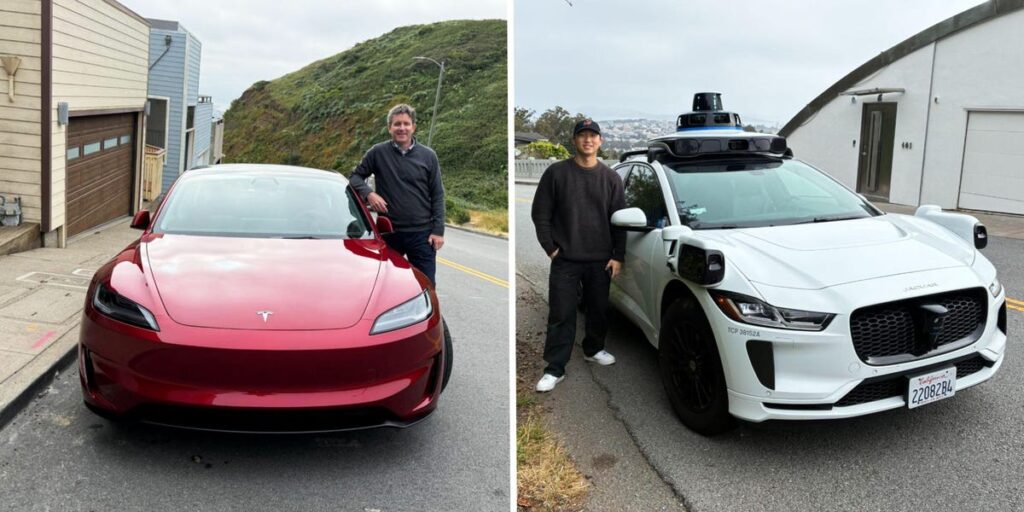The race for robotaxi services is intensifying.
Tesla is set to launch its autonomous ride-hailing service in Austin next month, while Waymo continues its expansion across major U.S. cities.
Both Tesla and Waymo rely on advanced technology for their robotaxis. Tesla calls its system Full Self-Driving (FSD), while Waymo uses the Waymo Driver.
Business Insider’s Lloyd Lee and Alistair Barr recently tested these two autonomous systems in San Francisco, and the results were surprising.
Initially, we anticipated minor distinctions between the two technologies, such as hesitations or unexpected lane changes. However, the Tesla made a significant mistake, leading to a clear victory for Waymo.
The Test
We used Waymo’s Jaguar I-PACE SUVs and Barr’s personal 2024 Tesla Model 3 for our tests. Waymo’s robotaxis are equipped with cutting-edge sensors, including five lidar units, six radars, and 29 cameras.
Barr’s Tesla featured Hardware 4 and the latest FSD Supervised software. It’s worth noting that the software tested is not the same as what Tesla plans to use for its upcoming robotaxi service, which will eventually not require a human driver.
We couldn’t evaluate the full robotaxi experience because Tesla has not yet launched that service. Instead, we focused on the driving capabilities of both cars, charting a course from San Francisco’s Twin Peaks to Chase Center, a distance varying from 4 to 7 miles depending on the route.
These locations were chosen because they include both suburban and urban landscapes with various winding roads and multiple possible routes. While Waymo’s vehicle currently cannot use highways, Tesla can.
We conducted our rides during light to moderate traffic, with the Waymo ride taking place around 8:30 a.m. and the Tesla about an hour and a half later.
Predictions
We expected a close competition between the two AI systems. Lee believed Waymo would offer a smoother ride because of its advanced sensors, while Barr favored Tesla due to his extensive experience with its FSD.
Waymo Performance
During the ride, Waymo’s AI driver demonstrated a balance between safety and assertiveness. For instance, it confidently navigated yellow lights but avoided risky maneuvers.
One amusing moment occurred when Waymo, waiting behind another vehicle at a stop sign, opted to switch lanes, reminiscent of a human driver becoming impatient.
Barr noted that the Waymo Driver displayed a sense of urgency, almost as if it cared about getting us to Chase Center on time, likening it to a "New York cab driver."
Waymo’s spokesperson explained that the system is designed to continuously plan its next moves, including lane changes when beneficial. Overall, the ride felt comfortable, allowing for relaxed conversation without feeling tense.
Tesla Performance
Tesla’s FSD provided a mostly smooth experience, earning praise for its performance despite using a less complex hardware setup consisting of only eight cameras.
The system signaled properly when approaching large obstacles and displayed none of the "phantom braking" issues reported by Tesla users in the past. Highway driving also went without a hitch.
However, Tesla did commit some errors, including a significant one at the end of our ride, where it ran a red light.
As we assessed our experiences, both testers leaned toward declaring Waymo the winner, largely due to Tesla’s critical mistake.
It’s important to note that while Tesla has capabilities on the highway that Waymo does not yet offer, the incident of running a red light raised serious concerns, particularly for a future service without a human driver.
With the impending launch of Tesla’s robotaxi service, the spotlight will be on how its systems can improve and avoid critical errors in real-world conditions.


